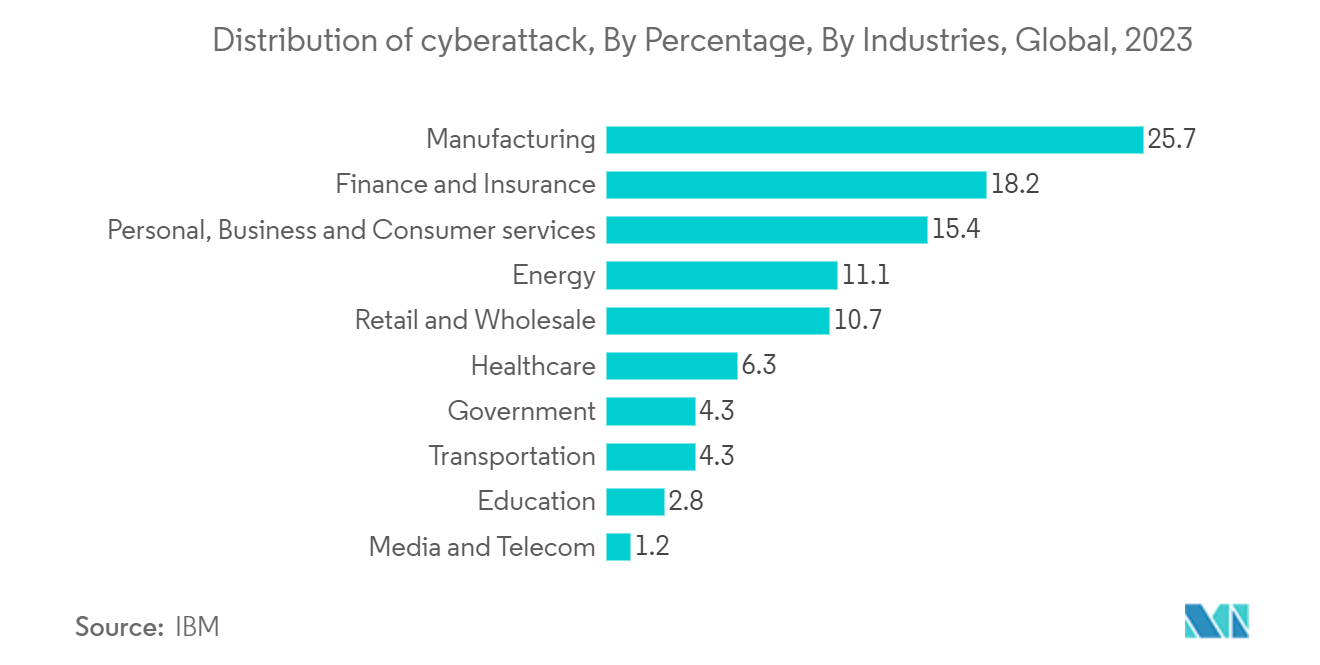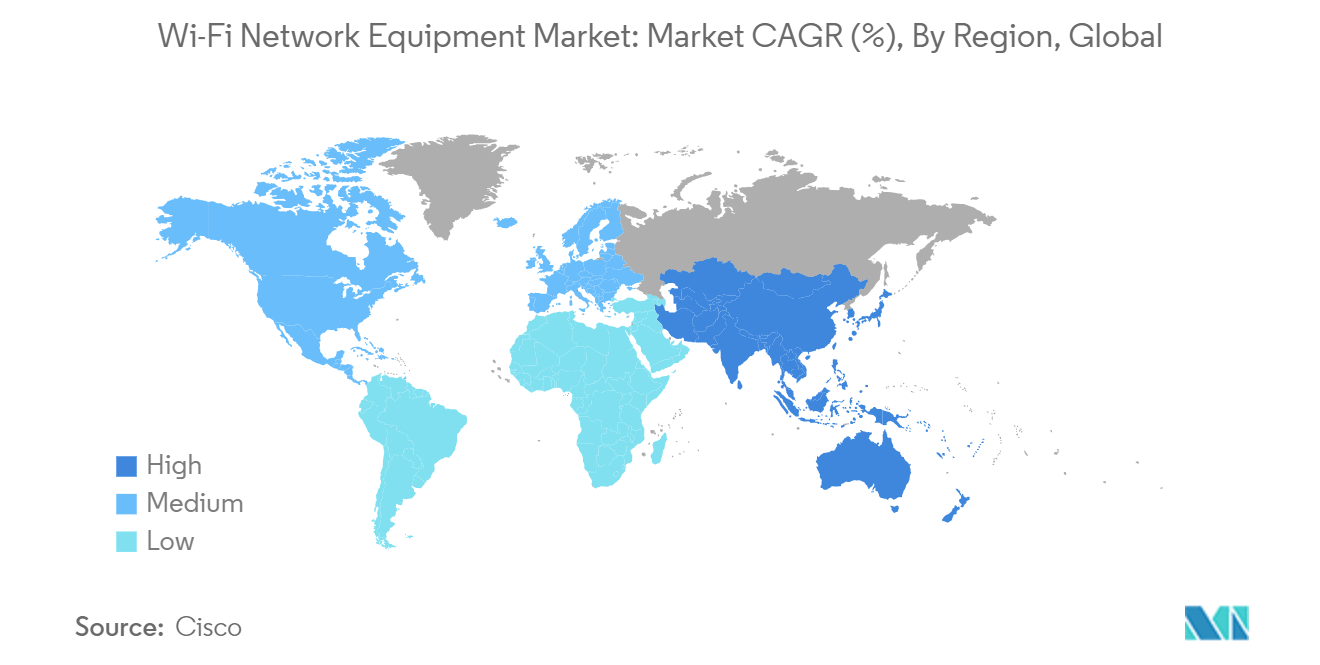Market Trends of Wi-Fi Network Equipment Industry
The Enterprises Segment is Expected to Hold a Major Share
- Enterprises form a pivotal segment, offering the infrastructure and services crucial for organizational, educational, healthcare, and large-scale business communication. They oversee the deployment and maintenance of network infrastructures, supporting voice, data, and internet services.
- Public safety entities, including police, fire, and emergency services, heavily depend on these Wi-Fi network equipment devices for swift information sharing, coordination, and emergency response. Moreover, the healthcare sector relies on these networks for secure patient data transmission, telemedicine, remote monitoring, and seamless medical data exchange among professionals.
- Moreover, there is a growing need for Wi-Fi 6 (802.11 ax) adoption, which is driven by higher speed and better performance in dense environments. Many enterprises are upgrading to Wi-Fi 6, which caters to the increasing need for bandwidth-intensive applications. Many enterprises are moving toward cloud-managed Wi-Fi solutions, which allow centralized management, scalability, and easier deployment.
- AI platforms and applications empower enterprise developers, enabling them to harness ML's capabilities for heightened accuracy, user experience, and efficiency. The reach of AI is set to span from the edge to the core to the cloud. For instance, in December 2023, Origin AI and Airties joined forces to enhance ISP revenue and customer satisfaction through Wi-Fi Sensing Technology. This collaboration marks a significant advancement in Smart Wi-Fi solutions. By leveraging the partnership, Airties’ ISP clients included an advanced intrusion detection feature in their broadband offerings. By integrating Origin’s advanced technology, Airties aims to not only boost ISPs' revenue streams but also combat customer churn and elevate their Net Promoter Scores (NPS).
- Moreover, increasing cybersecurity threats encourage enterprises to use advanced Wi-Fi solutions with better security features to protect data and remain compliant with country-specific regulations. As per data by IBM, the manufacturing sector was exposed to maximum cyber threats, which were 25.7%, followed by the finance and insurance sector, with 18.2% threats in 2023.

Asia-Pacific is Expected to Hold a Major Growth Share
- 5G and Wi-Fi are often seen as complementary technologies. While 5G primarily provides broad network coverage and high-speed mobile connectivity, Wi-Fi offers high-capacity and localized coverage, especially indoors. Several advanced markets have taken the lead in rolling out 5G in Asia-Pacific. South Korea set the global pace by launching the world's first nationwide 5G network in April 2019. This was swiftly followed by similar deployments in Australia, the Philippines, China, and New Zealand later that same year. According to GSMA Intelligence, the region is now witnessing a second wave of 5G rollouts, with countries like Indonesia, India, and Malaysia poised to propel Asia-Pacific into one of the world's largest 5G markets by 2025.
- There is growing investment in expanding public Wi-Fi infrastructure to provide reliable internet access in urban areas, public transportation, and venues. This trend is supported by government initiatives and private-sector investments that aim to improve connectivity for all. According to Cisco, Asia-Pacific is expected to have the highest share of global public Wi-Fi hotspots, at around more than 48% in 2024.
- AI and machine learning are increasingly shaping network management and automation. These technologies automate network settings, streamline issue resolution, and enhance performance based on usage patterns. AI plays a pivotal role in optimizing energy consumption within network infrastructures, leading to substantial reductions in both carbon footprints and operational costs, especially in advanced telecommunications networks. According to the CompTIA IT Industry Outlook 2024 survey, 30% of channel firms are already integrating AI into their operations, while an additional 26% are actively exploring AI solutions.
- As digital files, including high-definition videos, software updates, and datasets, continue growing, networks with high speeds and greater bandwidth are crucial. They enable faster transfer rates and empower users to download and upload files swiftly online. Many corporations are now gravitating toward cloud databases for enhanced data protection. In this landscape, Wi-Fi with expanded bandwidth emerges as a key player, facilitating swift and efficient access to online data.
- High-bandwidth speeds are becoming imperative, especially as consumer cloud storage gains traction, ensuring that downloading large multimedia files is as swift as transferring them from a local hard drive. For example, a Cisco report highlights that Asia-Pacific has achieved a remarkable 97% penetration rate in delivering speeds exceeding 25 Mbps.
- Several market players are enhancing Wi-Fi technologies to cater to advanced solutions for augmented reality use cases. In February 2024, Huawei set the tone by introducing its enterprise-grade "AirEngine Wi-Fi 7," a cutting-edge solution that adheres to the latest Wi-Fi standards. This technology promises a more robust and seamless wireless network, especially in scenarios demanding high-density, high-bandwidth, and low-latency connections. These scenarios include accessing the metaverse and leveraging augmented reality/virtual reality (AR/VR) for educational purposes.



